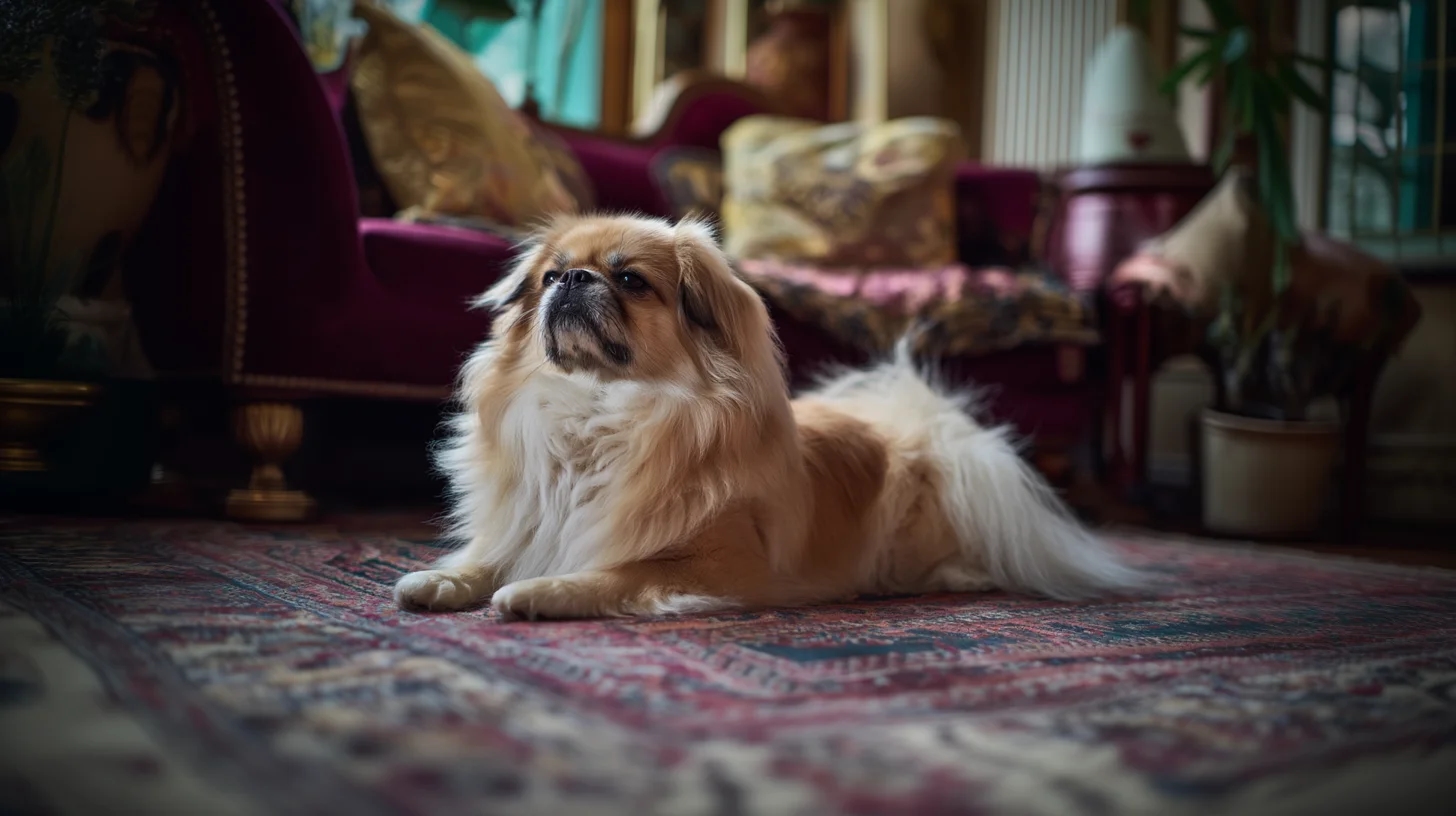
Pekingese
Breed Facts
Height
8-11 inches
Weight
7-14 pounds
Lifespan
12-18 years
Key Traits
Overview
Regal, affectionate companions with flowing coats and a dignified, lion-like presence. These charming, loyal dogs blend quiet confidence with deep devotion—perfect for individuals and families seeking a bold, loving friend who adores close bonds and carries themselves like royalty in a small, elegant package.
Temperament & Personality
You’ll find your Pekingese affectionate and devoted to a select group of family members. They’re confident and independent-minded, which can make them a bit stubborn during training. At home they’re usually calm and dignified, but these tiny dogs are alert and have a surprisingly loud bark. Early socialization helps them stay friendly with children and other pets.
Care, Living Environment, & Grooming
Pekingese have moderate exercise needs – a short daily walk or indoor playtime is usually enough. They adapt easily to apartment life thanks to their small size, but you must keep them cool on warm days (their flat faces make it hard to pant). Their long, thick double coat needs frequent maintenance: plan to brush several times a week to prevent tangles. Also clean their facial folds and eyes daily to avoid irritation.
- Daily: Brush the coat and wipe facial folds/eyes.
- Weekly: Bathe if needed; clean ears; trim nails.
- Every 6–8 weeks: Professional grooming (coat trimming, nail trim).
Keep indoor temperatures moderate (air conditioning or shade) so your Pekingese stays comfortable.
Training & Socialization
Training a Pekingese can be challenging since they’re independent and may not see the point of tricks. Use gentle, positive reinforcement (treats, praise, clickers) and keep sessions short and fun. Early socialization is important, as these alert dogs may bark at new sights. With consistency and patience, a Pekingese can learn basic commands and good manners.
Health Considerations
Pekingese are generally healthy, with a typical lifespan of about 12–14 years. However, their flat face and small size do bring certain risks. Common issues include:
- Brachycephalic airway syndrome: breathing difficulties due to their short muzzle.
- Dry eye (Keratoconjunctivitis sicca): insufficient tear production, leading to eye irritation.
- Progressive Retinal Atrophy (PRA): an inherited condition causing gradual vision loss.
- Patellar luxation: knee cap slipping out of place (common in toy breeds).
- Dental disease: crowded teeth leading to tartar buildup and decay.
Regular vet check-ups should include eye and knee examinations. Keeping your Pekingese at a healthy weight helps minimize many of these risks.
Cost of Ownership
Owning a Pekingese typically runs around $1,800 per year. Major costs break down roughly as follows:
- Food & treats: ~$300–400/year for high-quality small-breed food.
- Vet care: ~$400–500/year for annual check-ups, vaccines, and routine dental care.
- Grooming: ~$200–300/year (brushes, bathing supplies, and professional grooming).
- Insurance/Savings: ~$300–500/year for pet insurance or emergency funds.
First-year costs are higher due to puppy supplies, initial vet visits, and spay/neuter surgery.
Pros and Cons
Pros
- Exceptionally loyal, devoted companion.
- Small size and low exercise needs (good for apartments).
- Alert watchdog instincts (will alert you of visitors).
- Affectionate and good with gentle older children.
Cons
- Very high grooming and maintenance needs.
- Prone to breathing/overheating problems (flat face).
- Stubborn streak—can be difficult to housetrain.
- Can develop separation anxiety if left alone often.
Fun Facts
Pekingese were once sacred dogs of Chinese emperors and had to live inside the Forbidden City. In 1860, British soldiers looted the Imperial Palace and took several Pekingese; one named “Looty” was given to Queen Victoria. These “little lion dogs” (so named for their mane-like fur) soon became fashionable in Europe.
Frequently Asked Questions
Are Pekingese good apartment dogs?
Absolutely. Their toy size and calm indoor nature make them well-suited to apartment living. Just be sure the environment stays cool on hot days, since Pekingese do poorly in heat.
How much exercise does a Pekingese need?
Not much. A short daily walk or indoor play session (10–15 minutes) is usually sufficient. Because of their flat faces, avoid long or strenuous exercise, especially in warm weather.
Can first-time owners handle a Pekingese?
Possibly. Pekingese can be a challenge for first-timers due to their grooming needs and independent nature. If you’re patient with training and willing to brush them regularly, a first-time owner can have success with this breed.
Do Pekingese shed a lot?
Yes. Pekingese have a long, thick double coat, and they shed year-round. You’ll need to brush yours almost daily to manage loose hair and prevent matting.
References
Personality Profile
Find your perfect puppy pair!
Take our quick personality quiz to find the breeds that match your personality.
Start Quiz NowKey Traits
Temperament
affectionate
Reserved
Cuddly
energy Level
Calm Companion
High-Energy Dynamo
Social Behavior
good With Children
Best with Adults/Older Kids
Kid-Friendly
barking Level
Quiet-Natured
Talkative
Care & Maintenance
shedding Level
Light Shedder
Heavy Shedder
exercise Needs
Short Walks Enough
Needs Daily Workouts
Learning & Cognition
trainability
Independent Thinker
Eager Learner
mental Stimulation Needs
Content Relaxer
Needs Challenges
Breed Facts
Height
8-11 inches
Weight
7-14 pounds
Lifespan
12-18 years
Key Traits
You Might Also Like
Find Your Perfect Puppy Pair
Take our scientifically-backed personality quiz to discover which dog breeds align with your personality.
Start the Quiz


